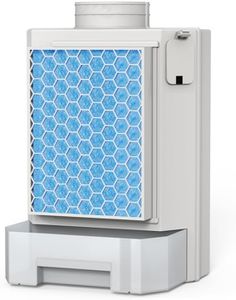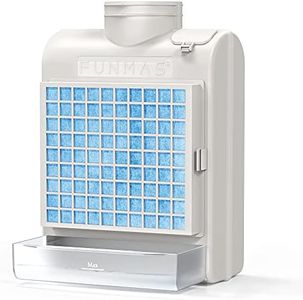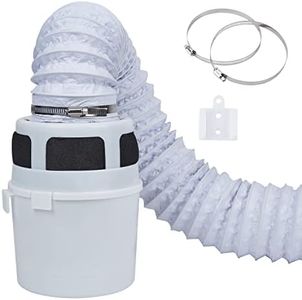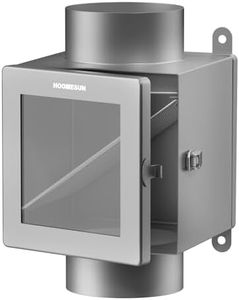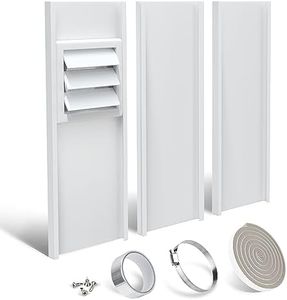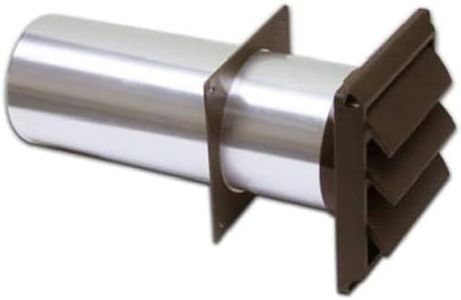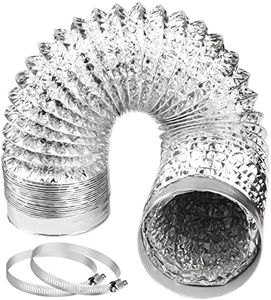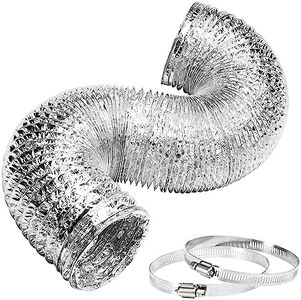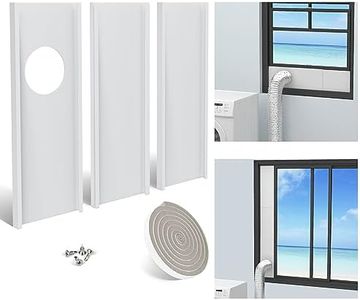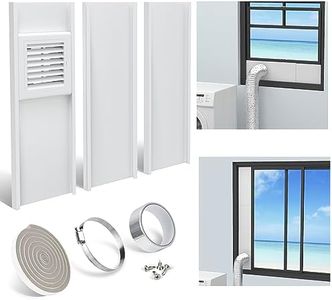We Use CookiesWe use cookies to enhance the security, performance,
functionality and for analytical and promotional activities. By continuing to browse this site you
are agreeing to our privacy policy
10 Best Dryer Vents
From leading brands and best sellers available on the web.Buying Guide for the Best Dryer Vents
Choosing the right dryer vent is important because it helps safely remove hot air and moisture from your dryer to the outside. The correct vent can improve your appliance’s efficiency, reduce drying times, prevent lint buildup, and lower the risk of fire. By understanding your needs and your laundry setup, you can make sure your dryer works at its best for years to come.Vent TypeThe vent type refers to how the vent is constructed and installed. Common options include rigid metal ducts, semi-rigid metal ducts, flexible aluminum ducts, and plastic ducts. Rigid and semi-rigid types are the safest and most efficient because they allow air and lint to pass through easily and resist crushing, while flexible metal ducts are easier to install but can catch lint. Plastic ducts are generally not recommended because they can melt or catch fire. For most homes, using rigid or semi-rigid ducts is best, especially for long or hidden runs, while flexible metal can be considered for short, straight runs where access is limited.
Length and ConfigurationThe length and configuration describes how far the vent needs to travel from the dryer to the outside and how many bends or turns are in the path. Shorter runs with few bends are better because they help air flow freely, reducing drying time and lint buildup. Each turn or bend makes it harder for air to escape efficiently. If your setup requires a long vent with several bends, choose a vent type with smooth walls, and try to use the shortest, straightest route possible. Always check your dryer's manual for the recommended maximum vent length.
DiameterVent diameter is the width of the vent tube, which is typically 4 inches for most residential dryers. The right diameter ensures that the dryer can push hot air and lint outside without resistance. If the duct is too narrow or reduced by fittings, it can cause clogs and slow drying. Always use a duct that matches the outlet size of your dryer, which is almost always 4 inches, and avoid squeezing or crimping the duct to fit a smaller opening.
Material QualityMaterial quality is about how durable and safe the duct is. Good dryer vents are made from metals like aluminum or galvanized steel, which resist heat and won't catch fire if there’s a lint backup. Avoid using plastic or thin, easily crushed materials, as these can lead to safety hazards. If you want a vent that lasts a long time and keeps your home safe, look for ones labeled as UL-listed and made from solid metal.
External Vent CoverThe external vent cover is the part installed on the outside wall or roof to let air escape and prevent pests or rain from getting in. There are flap-style, louvered, and hooded designs. A good cover won’t trap lint, opens easily when the dryer is running, and keeps out birds or rodents. For most homes, a louvered or hooded cover works well, but if you're in a windy or rainy area, choose one that effectively blocks drafts and water.
Ease of CleaningHow easy the vent is to clean affects how well it works over time. Vents that are smooth inside, with few bends and wider openings, are easier to maintain and less likely to clog with lint. Some vents have removable or access sections for cleaning. If you prefer low maintenance, choose a vent that can be easily taken apart or accessed, and plan a route that's easy to reach for regular cleaning.

